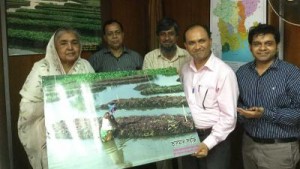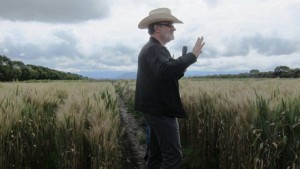Latest on the #OpenWheatBlast project.
Hon. Matia Chowdhury, Minister of Agriculture, People’s Rep of Bangladesh meets with Professor Tofazzal Islam’s team. Read Tofazzal’s account as posted on his Facebook page. “Honorable Minister highly appreciated our quick response to a national crisis from personal initiative and extending collaboration to the global scientific community. She highly encouraged us to continue our molecular biological and genetic works.”
Detection and confirmation of wheat blast disease by BARI scientists in Bangladesh. A copy of the April 2016 report is available for download. Please note the excellent recommendations made by BARI scientists to address the crisis. The report predates the release of the pathogen sequence data on Open Wheat Blast and remarks on the necessity for DNA fingerprinting to fully identify the nature of the pathogen. The pathogen Magnaporthe (Pyricularia) oryzae consists of a complex set of strains that infect ~50 species of grasses. It is critical to know the enemy, and determine precisely the identity of the epidemic strain. Such knowledge has implications for disease management and for setting up an optimal response plan. Note that the precise identity of the South American wheat blast pathogen was still being debated as recently as few weeks ago.
Dr. Hans Baun, CIMMYT, comments on wheat blast outbreak in Bangladesh. Dr. Braun is the global director of the wheat program with the International Maize and Wheat Improvement Centre (CIMMYT). He is quoted as saying “There is a big question there, is it the same wheat blast as we see in Latin America, that can only impact wheat, or is it a local mutant that comes from rice, which also suffers from blast.” Here is a link to CIMMYT page on wheat blast.
Don’t forget to follow updates on Twitter using the hashtags #OpenWheatBlast and #WheatBlast


